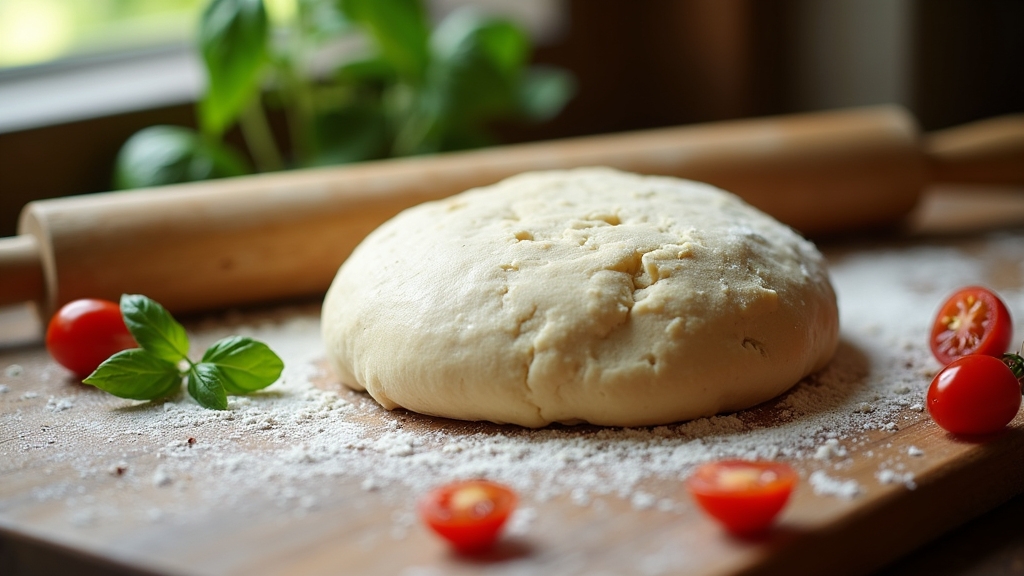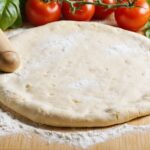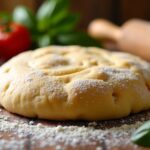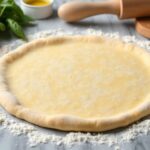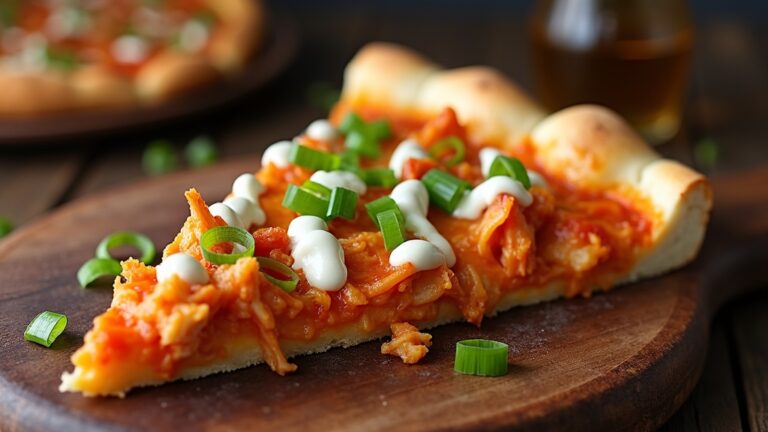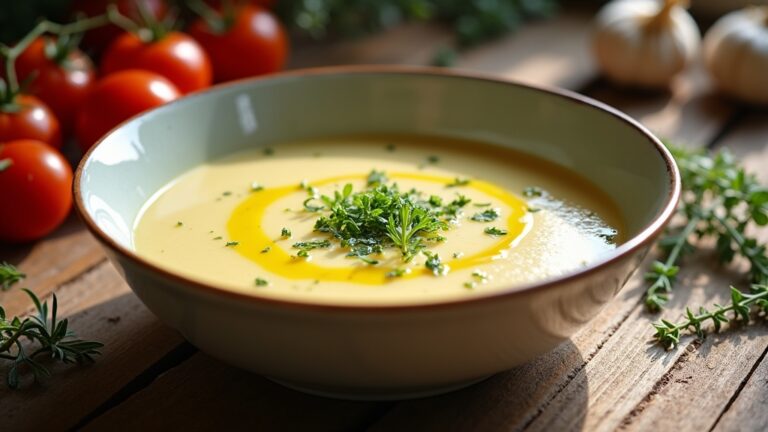Gluten Free Pizza Dough Recipe
I’ve crafted a gluten-free pizza dough that’s not just good for your diet but also tastes amazing! By mixing gluten-free flours and following simple steps, I achieve the perfect texture for my pizzas. It rises beautifully and works well with a variety of unique toppings. The best part? It’s a fun process to explore! If you want to know the recipe and helpful tips for making it, just keep going!
Contents
History
When I think about the history of gluten-free pizza dough, I can’t help but marvel at how far we’ve come in accommodating diverse dietary needs. Ancient cultures, long before gluten intolerance was recognized, crafted breads using various grains. These early innovators experimented with ingredients like quinoa and buckwheat, laying the groundwork for what we now cherish as gluten-free options. Over time, regional variations emerged, each reflecting local tastes and available resources. In Italy, for instance, they embraced rice flour, while in the Americas, cornmeal found its way into the mix. Today, with advancements in food science and culinary creativity, we’re witnessing a renaissance in gluten-free pizza dough that celebrates both tradition and innovation, making delicious, inclusive dining a reality.
Recipe
Creating a delicious gluten-free pizza dough is a simple and rewarding process for anyone looking to enjoy a homemade pizza without the gluten. This recipe uses a blend of gluten-free flours and ingredients that provide the right texture and flavor, ensuring your pizza crust is both crispy and chewy. Whether you’re following a gluten-free diet or just want to try something new, this dough will impress you and your guests.
To start, gather all your ingredients and prepare your workspace. This dough is versatile and can be used for various pizza styles, from thin crust to thick crust. The key to a successful gluten-free pizza dough is allowing it to rise properly, which helps achieve that ideal texture. So, let’s get to it!
Ingredients:
- 2 cups gluten-free all-purpose flour
- 1 teaspoon xanthan gum (if not included in flour blend)
- 1 teaspoon baking powder
- 1 teaspoon salt
- 1 tablespoon olive oil
- 1 teaspoon honey or sugar
- 3/4 cup warm water (about 110°F)
Instructions:
In a large mixing bowl, combine the gluten-free all-purpose flour, xanthan gum (if needed), baking powder, and salt. In a separate bowl, mix the warm water, olive oil, and honey or sugar until well combined. Gradually pour the wet ingredients into the dry ingredients and stir until a dough forms. Knead the dough gently for a few minutes until it’s smooth. Allow the dough to rest for 30 minutes covered with a damp cloth. Preheat your oven to 475°F (245°C). Roll out the dough on a floured surface to your desired thickness, then transfer it to a pizza stone or baking sheet. Add your favorite toppings and bake for 12-15 minutes or until the crust is golden and cooked through.
Extra Tips:
For the best flavor and texture, let your dough rest longer if possible, up to an hour, to help it develop. If you find the dough too sticky, sprinkle a little more gluten-free flour as you roll it out. Additionally, using a pizza stone can enhance the crust’s crispiness. Experiment with different toppings and sauces to create your perfect pizza. Enjoy your gluten-free pizza night!
Cooking Steps
Now that we’ve gathered our ingredients, let’s get into the cooking steps that will transform our gluten-free flour into a delicious pizza dough. I’ll guide you through measuring the flour, mixing in the warm water, and kneading the dough until it’s perfectly smooth. After a brief rise, we’ll shape it into a pizza base ready for your favorite toppings!
Step 1. Measure Gluten-Free Flour
To kick off your gluten-free pizza dough, measuring the flour accurately is essential for achieving that perfect texture. Different flour types can greatly influence your dough’s outcome, so let’s make sure we get it right. Here are some effective measuring techniques I’ve found helpful:
- Spoon and Level: Use a spoon to fluff the flour in its container, then spoon it into your measuring cup and level off with a straight edge.
- Digital Scale: Weigh your flour for precision; 1 cup of gluten-free flour typically weighs around 120 grams.
- Sift First: If your recipe calls for sifted flour, sift it before measuring to avoid dense dough.
- Mix Flours: Combine different gluten-free flour types for a balanced texture and flavor.
Let’s get started on that delicious dough!
Step 2. Add Warm Water Mixture
With the flour measured and ready, it’s time to bring the dough to life with a warm water mixture. I heat water until it feels pleasantly warm to the touch—around 110°F is ideal for yeast activation. Once the temperature’s right, I mix in a bit of sugar to feed the yeast and help it bloom. I slowly pour the water into the flour, allowing it to hydrate fully. This is where the magic happens—the blend of warm water and flour creates a beautiful, cohesive mixture that’s essential for proper pizza hydration. I can already feel the dough starting to take shape. Watching it come together is a thrilling step in this gluten-free journey!
Step 3. Knead Dough Until Smooth
Gently pressing my palms into the dough, I begin to knead it until it’s smooth and elastic. This crucial step guarantees the dough consistency is just right for a delightful gluten-free pizza. Using effective kneading techniques, I focus on creating a uniform texture that feels soft yet sturdy. Here’s how I do it:
- Fold: I fold the dough over itself, trapping air for lightness.
- Push: With the heel of my hand, I push the dough away from me, applying gentle pressure.
- Turn: I rotate the dough a quarter turn to guarantee even kneading.
- Repeat: I repeat this process for about 5-7 minutes until it reaches the desired smoothness.
This technique transforms the dough into a masterpiece ready for pizza perfection!
Step 4. Let Dough Rise Briefly
After kneading the dough to perfection, I let it rise briefly to develop flavor and texture. This step is essential, as it allows for yeast activation, giving my gluten-free pizza dough that airy, light quality we all crave. I cover the dough with a damp cloth and place it in a warm spot, letting it rest for about 15 to 30 minutes. During this time, I can almost feel the dough texture transforming, becoming softer and more pliable. I keep an eye on it, watching for that subtle puffing up. It’s fascinating how just a short rise can elevate my pizza game, creating a base that’s not only innovative but also incredibly satisfying to bite into.
Step 5. Shape Dough Into Pizza Base
I roll out the risen dough on a lightly floured surface, feeling its elasticity under my hands. It’s time to release my creativity with some dough shaping techniques. Whether I’m going for a classic round pizza base or a trendy rectangular style, I embrace the process. Here’s how I do it:
- Flatten the Dough: Using my palms, I gently press the dough into a disc.
- Stretching: I carefully stretch the edges, rotating as I go to maintain an even thickness.
- Pinch the Crust: For a rustic touch, I pinch the outer rim to create a thicker crust.
- Shape Finalization: I shape it to my desired style, ensuring a perfect foundation for my toppings.
Now, I’m ready for the toppings!
Nutritional Guide
When it comes to enjoying a delicious slice of gluten-free pizza, understanding the nutritional profile of your dough is essential. I’ve broken down the nutrient composition to help you make informed dietary considerations.
| Nutrient | Amount per Serving |
|---|---|
| Calories | 200 |
| Protein | 4g |
| Total Fat | 3g |
| Carbohydrates | 38g |
| Fiber | 2g |
This nutrient breakdown showcases the balance of macronutrients in your gluten-free pizza dough. You’ll find it rich in carbohydrates, providing energy without sacrificing taste. Whether you’re adhering to a gluten-free lifestyle or simply exploring innovative recipes, this dough can fit seamlessly into your meal plan. Enjoy your slice guilt-free!
Final Thoughts
Although gluten-free diets can sometimes feel restrictive, creating your own gluten-free pizza dough opens up a world of delicious possibilities. With a little creativity and the right cooking tips, you can craft a pizza that’s not only satisfying but also bursting with flavor. Here’s how to elevate your pizza experience:
- Experiment with unique pizza toppings like roasted vegetables, gourmet cheeses, or fresh herbs.
- Try different gluten-free flours, such as almond or chickpea, to discover new textures.
- Don’t forget to pre-bake the dough for a crispier crust!
- Enhance flavors with homemade sauces, like pesto or spicy marinara.
Embrace the journey—your gluten-free pizza adventure awaits, and trust me, it’s worth every bite!
Frequently Asked Questions
Can I Use Regular Flour Instead of Gluten-Free Flour?
I’ve tried using regular flour, but it doesn’t yield the same results as gluten-free alternatives. The texture and flavor differ greatly; I recommend sticking with gluten-free options for the best outcome in your recipes.
How Do I Store Leftover Gluten-Free Pizza Dough?
When I have leftover dough, I wrap it tightly in plastic wrap and store it in the fridge for up to three days. For longer preservation, I freeze it in an airtight container. Enjoy your creations!
Is Gluten-Free Pizza Dough Safe for Celiac Disease?
Eating gluten-free pizza dough feels like dancing on air, but it’s vital to guarantee it’s made with safe gluten alternatives. If it’s cross-contaminated, celiac symptoms can hit hard, so always check ingredients carefully!
What Toppings Work Best With Gluten-Free Pizza?
When I create gluten-free pizza, I love experimenting with vibrant vegan toppings like roasted veggies and artichokes. Cheese alternatives, like cashew cheese, elevate the flavor, making each bite a delightful fusion of creativity and taste.
Can I Freeze Gluten-Free Pizza Dough?
They say, “A stitch in time saves nine.” Yes, I can freeze gluten-free pizza dough! Just follow these freezing tips: wrap it well to maintain dough texture, and you’ll have a delicious, ready-to-use base later!
Conclusion
In the end, making gluten-free pizza dough is like crafting a delicious masterpiece; it requires patience and a little creativity. As you roll out your dough and watch it rise, you’ll feel a sense of accomplishment that’s truly rewarding. So, whether you’re gluten-sensitive or just exploring new culinary horizons, this recipe opens the door to countless tasty possibilities. Grab your favorite toppings, and let your homemade pizza be the canvas for your next flavorful adventure!
